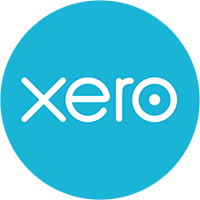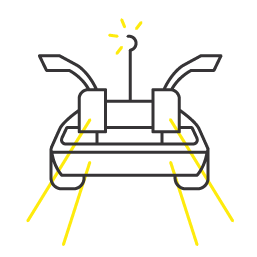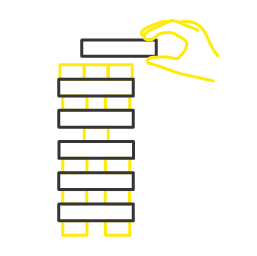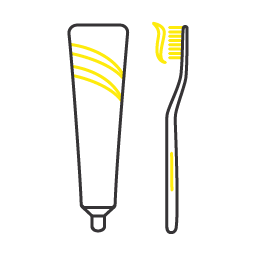This year’s budget falls short of providing material change to the tax system and with the Federal Election to be called in the coming weeks, it is not surprising the Government held back on making any radical changes to the current tax landscape.
In a bid to address a number of concerns from taxpayers about the rising cost of living, last night’s budget provided a number of cost of living measures to help individuals and families offset rising costs.
To help save you the pain of reading the budget documents or tuning into the political media commentary [sigh], we have summarised for you the main bits relevant for retirees and super.
1. Temporary Reduction in Fuel Excise
With rising fuel prices, a hot topic for both Australian households and businesses, the Government has announced a temporary reduction in fuel excise. From midnight tonight – 29 March 2022 the excise will be halved until 28 September 2022.
This should reflect 22.1 cents saving per liter from 30 March 2022. Surprisingly this measure is targeted at Australian households and small businesses, however, the budget measure doesn’t limit the businesses to which this will apply. It is simply a halving to the fuel exercise for 6 months.
For businesses with a heavy reliance on motor vehicles, this will be a welcome saving directly at the pump, we are expected to see this reduction flow through to consumers in the coming weeks.
The Australian Competition and Consumer Commission will be tasked with monitoring retailers to ensure this excise reduction is passed on to end consumers.
2. Cost of Living Tax Offset
The Low and Middle Income Tax Offset [LIMTO] will be increased from $1,080 per individual to $1,500 per individual [an increase of $420] by 30 June 2022. The existing features of the LIMTO will remain unchanged, including the offset end date of 30 June 2022.
The LMITO is a non-refundable offset, which means for taxpayers who do not have an income tax liability are not entitled to the LMITO. The increase to the LIMTO is designed to help singles and families with the increased cost of living pressures.
This offset is available for taxpayers when they complete their 30 June 2022 tax return, which will be from 1 July 2022.
| Taxable Income | LIMTO |
| $0 to $37,000 | Up to $675 |
| $37,001 to $48,000 | $675 to $1,500 |
| $48,001 to $90,000 | $1,500 |
| $90,001 to $126,000 | $420 to $1,500 |
| $126,001 and over | Nil |
3. Cost of Living Payment
To assist with the rising costs of living, the Government has announced a one-off payment of $250. The one-off payment will be made in April 2022 to the following eligible concession card holders:
- Age Pension
- Disability Support Pension
- Parenting Payment
- Carer Payment
- Carer Allowance [if not in receipt of a primary income support payment]
- Jobseeker Payment
- Youth Allowance
- Austudy and Abstudy Living Allowance
- Double Orphan Pension
- Special Benefit
- Farm Household Allowance
- Pensioner Concession Card [PCC] holders
- Commonwealth Seniors Health Card holders
- eligible Veterans’ Affairs payment recipients and Veteran Gold card holders
4. Affordable housing
To increase affordable housing the Government released budget measures aimed at making homes more accessible for first home buyers, regional Australians and single parents.
The Home Guarantee Scheme is set to increase to 50,000 places per year for three years from 2022-23 then 35,000 places a year on an ongoing basis. The scheme will see potential homeowners able to enter the market with deposits as low as 5% for first home buyers and 2% for single parents. The Regional Home Guarantee will support eligible homebuyers who have not owned a home for 5 years able to purchase a new regional home with only a 5% deposit.
The Finance and Investment Corporation will also receive $2.0 billion to support increased loans for affordable housing.
5. Self funded retirees
The only measure released in this budget aimed at self-funded retirees is an extension of the temporary reduction in minimum pension drawdown requirements. The Government proposes a 12-month extension of the 50% reduction of the usual rate for income streams, to assist retirees who have been negatively impacted by the pandemic. This measure will likely only help self-funded retirees who can supplement their income from other sources.
The following table outlines the minimum rates for superannuation income streams:
| Age | FY 2013–15 to 2018–19 | FY 2019–20 to 2022–23 |
| Under 65 | 4% | 2.00% |
| 65–74 | 5% | 2.50% |
| 75–79 | 6% | 3.00% |
| 80–84 | 7% | 3.50% |
| 85–89 | 9% | 4.50% |
| 90–94 | 11% | 5.50% |
| 95 or more | 14% | 7.00% |
6. Retirees and Super
While no significant changes in this budget for superannuation and retirees, there are other notable superannuation changes from previous budgets due to commence on 1 July 2022:
- Downsizer contribution – For those of retirement age looking to downsize their home and make additional superannuation contributions, the lower age threshold has now been reduced to age 60 from 65.
- The maximum amount of voluntary superannuation contributions that can be released under the First Home Super Saver Scheme increased from $30,000 to $50,000.
- The contribution work test was removed for those aged between 67 and 74. This will allow individuals aged 67 to 74 years to make or receive non-concessional [including under the bring-forward rule] or salary sacrifice superannuation contributions. The removal of the work test does not apply to personal deductible contributions. People in the 67 to 74 age bracket will still need to satisfy the work test to claim a tax deduction for personal contributions.
7. Health
The government has added some specific items to address cost of living concerns with health care. Cheaper and free medication will be accessible under a plan to reduce the safety net threshold of the Pharmaceutical Benefits Scheme [PBS]. The reduction in threshold should see people reach the safety net at approximately 12 fewer scripts than usual.
8. Supporting people with disability
The budget pledges new spending of $7.3m for people living with disabilities and their families as well as a $6.1m national advertising campaign designed to assist job seekers with a disability. Amaze Incorporated and Autism Awareness Australia are also set to receive $1.2m
9. Residential aged care
The government will provide $468 million over five years as a result of the Royal Commission into Aged Care Quality and Safety. The spending is to fund ongoing reforms and will target Services and Sustainability quality and safety, workforce, governance and home care.
In addition, the government will provide additional funding to the aged care sector to assist with preventing and managing outbreaks of coronavirus and more than $340 million to embed pharmacy services within residential aged care facilities.
20 free Rapid Antigen Tests will be available for concession card holders over a period of 7 months until 31 July 2022.
10. Increase to Medicare Levy Low Income Threshold
Thresholds for the low-income medicare levy reduction will be increased from 1 July 2021:
- From $23,226 to $23,365 for singles [an increase of $139]
- From $39,167 to $39,402 for families [an increase of $235]
For seniors and pensioners:
- From $36,705 to $36,925 for singles [an increase of $220]
- From $51,094 to 51,401 for families [an increase of $307]
Note: for each dependent child or student, the family income threshold increases by $3,619.
If you need help understanding what the budget means for you or you’d just prefer to know exactly how it will effect your affairs, please reach out to our accounting and financial planning on 1300BDEPOT or email us at oneplace@businessdepot.com.au to find out more.




















































